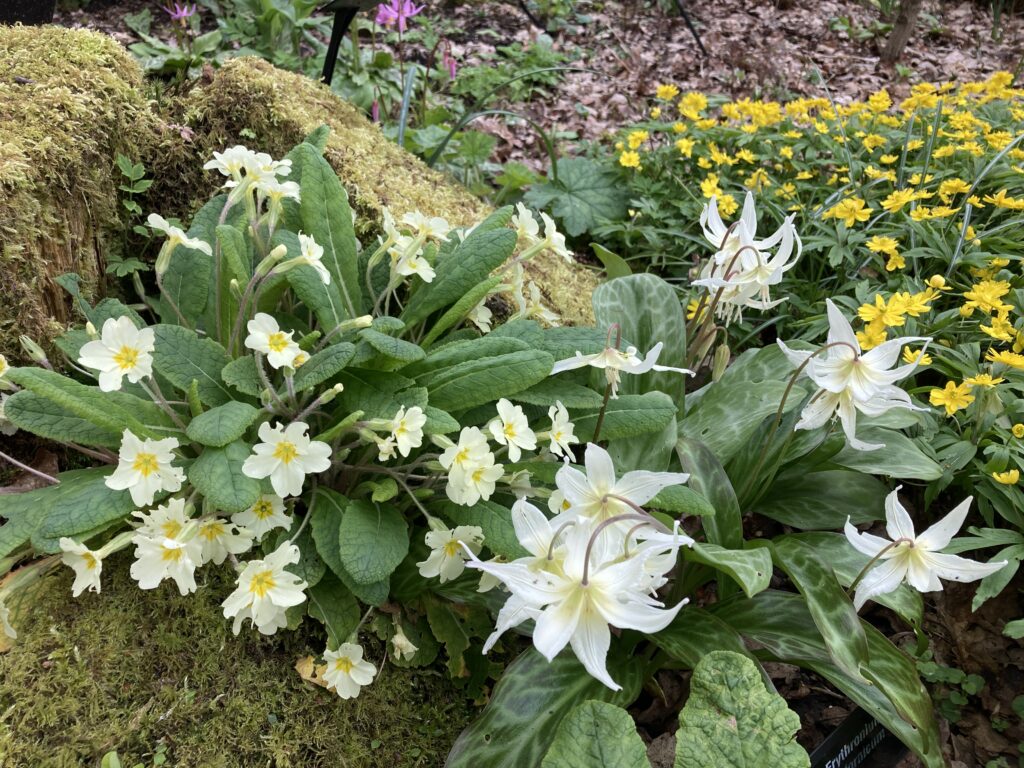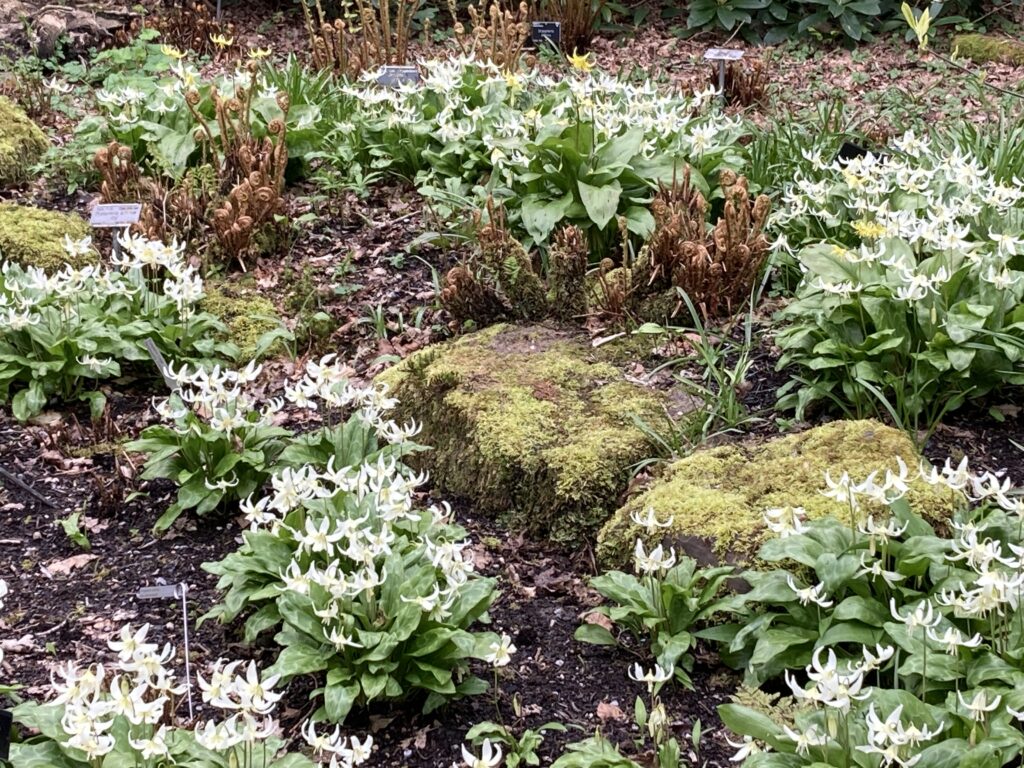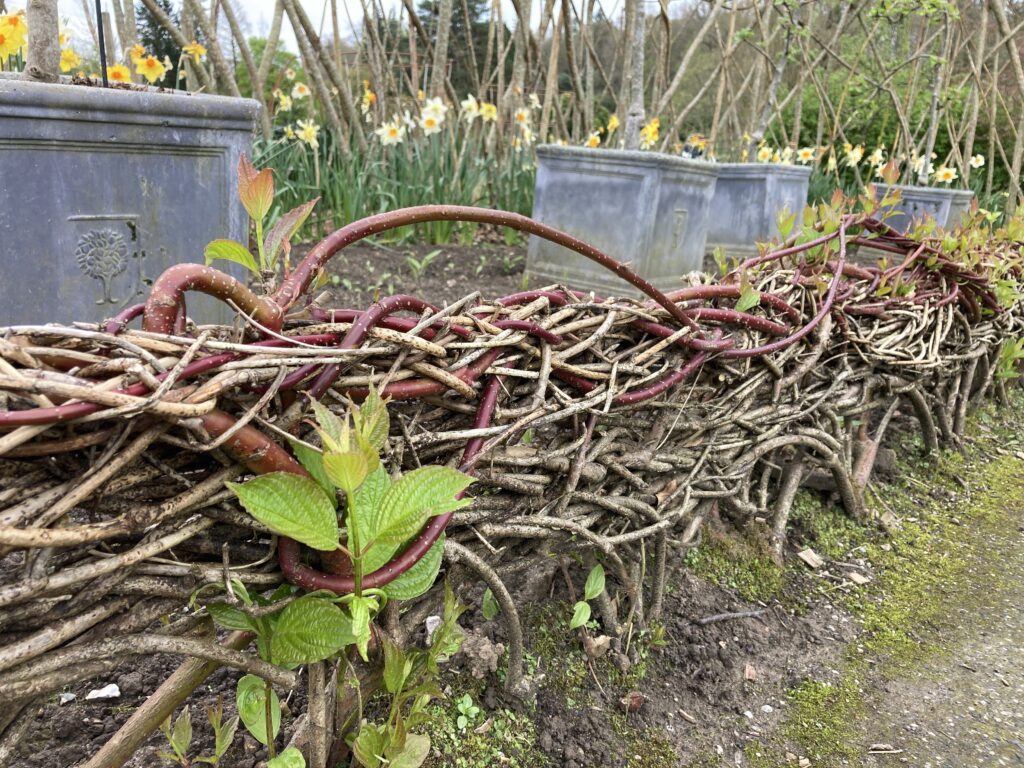Spring Ideas from RHS Harlow Carr

I'm just back from England where I spent two weeks visiting very special friends. It was wonderful to spend quality time together, bumbling around my favorite villages and towns, hiking in the Yorkshire Dales, swimming in the Solent, and drinking lots of 'proper' tea. While in Yorkshire my friend Jill suggested an outing to RHS Harlow Carr, one of my favorite public gardens. Far from just being a showcase, this garden is filled with ideas that the homeowner can recreate in their own space. This was my first visit so early in the year so I was excited to explore and discover something new. I must apologize for the photo quality though. Since I had to pack my wetsuit and hiking boots I didn't have room for my DSLR, hence these are just cell phone snaps (from an old phone).
Combinations to Celebrate Spring

Caught in the act! The tall yellow crown imperial fritillary caught my eye. This border is deer resistant although wasn't designed that way specifically.
After relentless grey winter days we are all ready for COLOR. I was excited to see some fresh ideas for spring ephemerals beyond crocus and tulips. The border above caught my eye with its crisp white and yellow color scheme.
The white birch bark set the scene, the color repeated by double white hellebores and some white daffodils with a soft yellow corolla (almost spent at this point). That yellow was echoed by tall yellow crown imperials as well as earlier yellow daffodils and a golden Carex spp..
This simple trio is definitely one I would like to copy. The common woodland primrose (Primula vulgaris) is the most delicate shade of buttermilk yellow, yet planted adjacent to White Beauty trout lilies (Erythronium c. 'White Beauty') it reads white. Notice the lovely veining on the foliage of the trout lily too. Adding a punch of bolder yellow, which echoes the eye of the primrose is a carpeting perennial which I think might be yellow wood anemone (Anemone ranunculoides). Sadly, I suspect that rabbits might like this. Let me know if you've grown it and what you thought.
The problem with ephemerals is that they are indeed short lived, often going dormant by early or mid-summer. I like the way these trout lilies have been interplanted with herbaceous ferns, whose foliage will hide the tired bulbs.

A plant tag gave me the clue to what was hidden beneath these anemones rather than the name of the groundcover itself.
Likewise these anemone have auriculate lady ferns (Athyrium otophorum) ready to take over the summer scene.
In another part of the garden there was a completely different yet equally striking color combination.
 Primula 'Dark Rosaleen' is one of several stellar cultivars bred by Joe Kennedy in Ireland. Noted for its bronze foliage as much as the flowers, this may be my favorite so far. The flowers almost look like the summer annual called Cherry Star super bells (Calibrachoa). Here it is partnered with the bronze foliage of an emerging peony while a laceleaf maple is in the distance. Clumps of black mondo grass are interspersed among the primula. Stunning.
Primula 'Dark Rosaleen' is one of several stellar cultivars bred by Joe Kennedy in Ireland. Noted for its bronze foliage as much as the flowers, this may be my favorite so far. The flowers almost look like the summer annual called Cherry Star super bells (Calibrachoa). Here it is partnered with the bronze foliage of an emerging peony while a laceleaf maple is in the distance. Clumps of black mondo grass are interspersed among the primula. Stunning.
Woven structures
I've shown you this living willow fence before, but I thought it was interesting to see at this time of year when it is just starting to leaf out.
I was struck by these archways in the kitchen garden but forgot to ask what species they had used. They appeared to have used two different species which have been lashed together at the base.
I noticed red twig dogwood (Cornus spp.) used to create a low woven border in the kitchen garden too.
They appear to have planted cuttings then woven them together and pruned as needed.
I suspect the above edging is woven hazel but thought the design itself was a great way to use a corner for edibles or ornamentals. You could easily practice crop rotation in the sectioned beds and the pathways make access easy.
Talking of edibles what about these dwarf apple trees espaliered to create a fence around the garden:
They would need some regular pruning but who can resist them in springtime?
See more from RHS Harlow Carr
Every time I visit here I see something new and of course just like our gardens at home this is always evolving with new areas being added and older ones being edited. You might enjoy these earlier posts that feature aspects of this garden:
- Hedgehogs, Floral Tapestries, and Design Inspiration from Harlow Carr
- Gourdgeous Pumpkin: An Exciting, Colorful Backdrop
- Celebrate Spring with Candelabra Primroses
Want to see this garden for yourself?
Be sure to sign up for my newsletter and be offered priority registration for our 2026 tour which will see us returning to the beautiful Yorkshire Dales and RHS Harlow Carr. You'll receive a free download when you subscribe too. Note that this is a separate registration for subscribing to my blog. The form for that is below:
Subscribe to Receive Blog Posts
Gardening inspiration delivered right to your inbox from Le Jardinet









